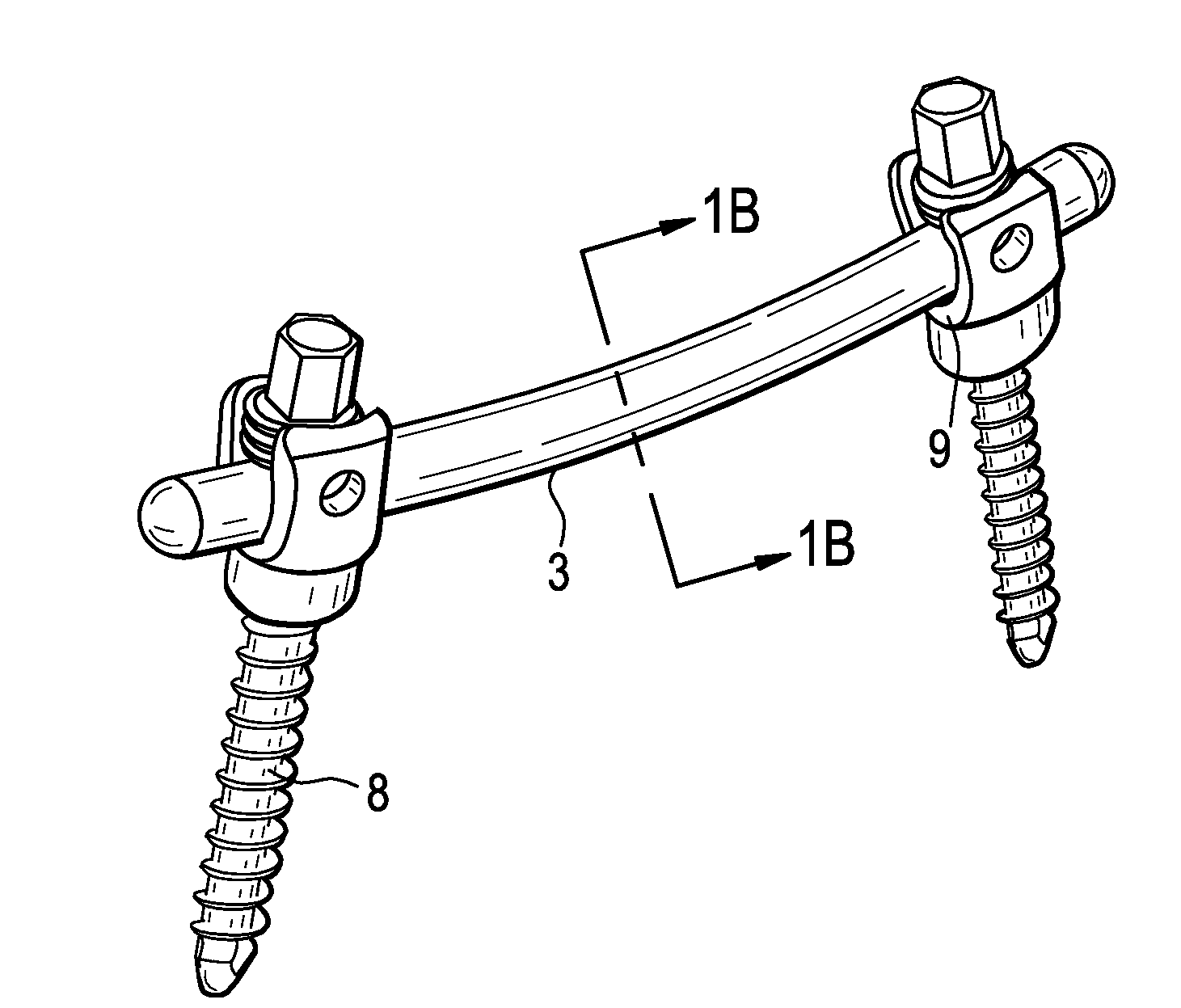Polymeric Pedicle Rods and Methods of Manufacturing
a technology of polymer pedicles and pedicles, applied in the field of polymer pedicles and methods of manufacturing, can solve the problems of adjacent level hypermotion, loosening of the pedicle screw, and reducing postoperative visualization
- Summary
- Abstract
- Description
- Claims
- Application Information
AI Technical Summary
Benefits of technology
Problems solved by technology
Method used
Image
Examples
Embodiment Construction
[0041]Now referring to FIGS. 1a-c, there are provided devices utilizing an internally reinforced polymeric core that is at least partially encased within at least one polymeric coating. In particular, there is a spinal fixation assembly 1 comprising:[0042]a) a spinal pedicle rod 3 comprising an internally reinforced polymeric core 5 that is at least partially encased within at least one polymeric coating 7, and[0043]b) a bone anchor 8 having a recess 9 for accepting the rod,
wherein the rod is fixed in the recess of the bone anchor.
[0044]FIG. 1a also shows that the rod may be bent (pre-lordosed) in order to accommodate the curvature of the spine in the region of interest. FIGS. 1b-c disclose axial cross-sections of the rod of FIG. 1a, wherein the rod has an internally reinforced polymeric core 5 that is encased within a polymeric coating 7. Whereas FIG. 1b discloses a circular cross-section, FIG. 1c discloses an oval cross-section. Non-circular cross-sections will provide better stif...
PUM
 Login to View More
Login to View More Abstract
Description
Claims
Application Information
 Login to View More
Login to View More - R&D
- Intellectual Property
- Life Sciences
- Materials
- Tech Scout
- Unparalleled Data Quality
- Higher Quality Content
- 60% Fewer Hallucinations
Browse by: Latest US Patents, China's latest patents, Technical Efficacy Thesaurus, Application Domain, Technology Topic, Popular Technical Reports.
© 2025 PatSnap. All rights reserved.Legal|Privacy policy|Modern Slavery Act Transparency Statement|Sitemap|About US| Contact US: help@patsnap.com



